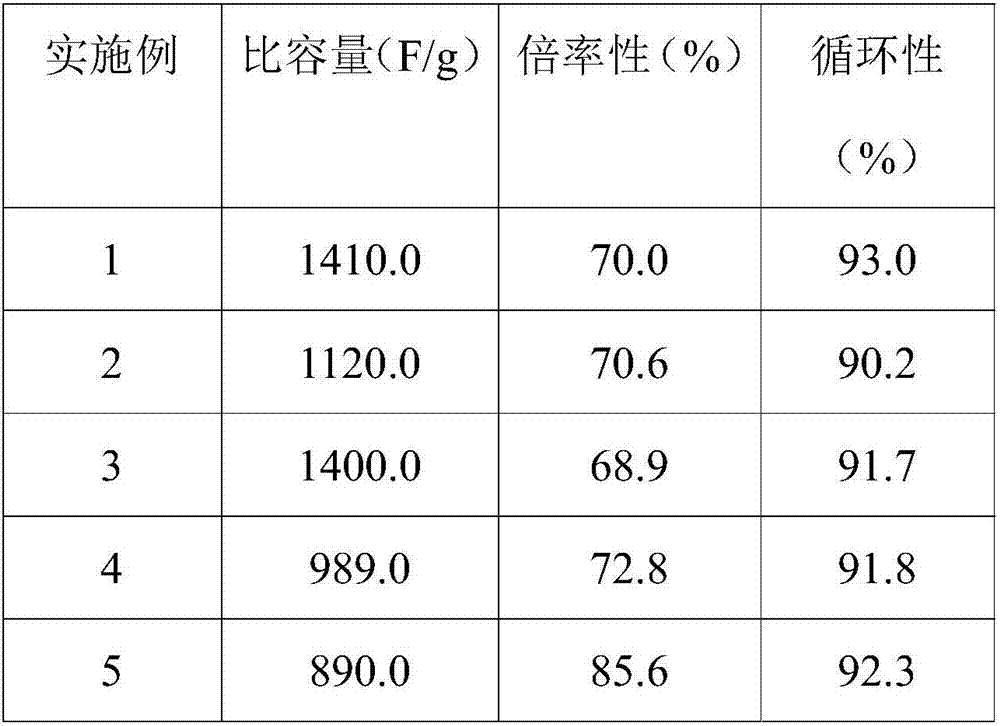Preparation method of nickel sulfide particles/cellulose-based carbon aerogel materials
A cellulose hydrogel, cellulose-based technology, applied in the field of nickel sulfide particles/cellulose-based composite carbon airgel materials and its preparation, can solve the low specific capacity of carbon airgel, adverse effects on the environment and human health , carbon aerogel limitations, etc., to achieve the effect of optimizing electrochemical performance, ingenious design ideas, and low price
- Summary
- Abstract
- Description
- Claims
- Application Information
AI Technical Summary
Problems solved by technology
Method used
Image
Examples
Embodiment 1
[0029] Fully dissolve 20g of sodium hydroxide in 80g of deionized water to prepare a 20wt% sodium hydroxide solution; fully dissolve 30g of urea in 70g of deionized water to prepare a 30wt% urea solution. Among them, sodium hydroxide can also be replaced by other alkaline substances, such as potassium hydroxide and lithium hydroxide.
[0030] Get 19g of 20wt% sodium hydroxide mixed with 19g of 30wt% urea solution, add 2g of bacterial cellulose, and transfer it to a refrigerator to freeze, and the cooling temperature range is -18 to 10°C. Stir the frozen bacterial cellulose / sodium hydroxide / urea / water mixture rapidly to dissolve the cellulose to obtain a concentrated solution of bacterial cellulose.
[0031] The obtained concentrated cellulose solution is poured into a mold and heated in water for a period of time to obtain an alkaline cellulose hydrogel. Wherein the heating temperature is 50-120°C, preferably 60-90°C, and the heating time is 1-10 hours, preferably 2-6 hours. ...
Embodiment 2
[0037] Fully dissolve 10g of sodium hydroxide in 90g of deionized water to prepare a 10wt% sodium hydroxide solution; fully dissolve 20g of urea in 80g of deionized water to prepare a 20wt% urea solution. Get 99g of 10wt% sodium hydroxide mixed with 99g of 20wt% urea solution, add 2g of plant cellulose, and transfer it to a refrigerator to freeze, and the cooling temperature range is -18~10°C. Other processes of the preparation of the nickel sulfide / cellulose-based composite carbon aerogel are the same as in Example 1.
Embodiment 3
[0039] Fully dissolve 15g of sodium hydroxide in 85g of deionized water to prepare a 15wt% sodium hydroxide solution; fully dissolve 25g of urea in 75g of deionized water to prepare a 25wt% urea solution. Get 49g of 15wt% sodium hydroxide mixed with 49g of 25wt% urea solution, add 2g of bacterial cellulose, and transfer it to a refrigerator to freeze, and the cooling temperature range is -18 to 10°C. Other processes of the preparation of the nickel sulfide / cellulose-based composite carbon aerogel are the same as in Example 1.
PUM
| Property | Measurement | Unit |
|---|---|---|
| Aperture | aaaaa | aaaaa |
| Particle size | aaaaa | aaaaa |
Abstract
Description
Claims
Application Information
 Login to View More
Login to View More - R&D
- Intellectual Property
- Life Sciences
- Materials
- Tech Scout
- Unparalleled Data Quality
- Higher Quality Content
- 60% Fewer Hallucinations
Browse by: Latest US Patents, China's latest patents, Technical Efficacy Thesaurus, Application Domain, Technology Topic, Popular Technical Reports.
© 2025 PatSnap. All rights reserved.Legal|Privacy policy|Modern Slavery Act Transparency Statement|Sitemap|About US| Contact US: help@patsnap.com



